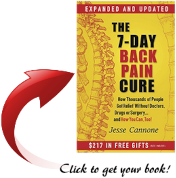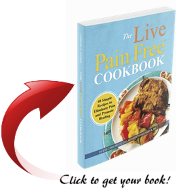When you see the word “Astaxanthin“, which is pronounced as “asta-ZAN-thin” , what is the first thing that pops into your mind? For me, I thought it was some kind of additive manufacturers stick into gum. Okay, bad play on words, however, I had no idea that it was an antioxidant … and a very significant one. I thought Glutathione, a critical endogenous antioxidant, was the “king of antioxidants”. But recently, Astaxanthin is being touted as the “alpha antioxidant”.

The Power Of Astaxanthin
In an study listed on PubMed, it described Astaxanthin as “a red-colored carotenoid well known for its high antioxidant capacity”. Carotenoids are a class of antioxidants that provide the natural food coloring, for example, in vegetables (red beets, bell peppers, carrots). But that’s not all they do. Carotenoids are a powerful class of antioxidants, known to prevent cardiovascular disease, prevent cancer and help facilitate your immune system. And you probably heard about beta carotene and lycopene, since they have been the popular carotenoids of choice in the heath and wellness market. And lately, Astaxanthin has started to pick up steam as many scientific studies are taking a close look at its super powers as an antioxidant, and as a powerful anti-inflammatory agent.
Natural Sources Of Astaxanthin
According to a Wikipedia entry, the green microscopic algae (i.e., “microalgae”), Haematococcus pluvialis, contains a very significant amount of Astaxanthin. What’s interesting is the fact that this microalgae produces significant amounts of Astaxanthin in response to environmental conditions. That is, when its environment becomes less than optimal to flourish. Such inhospitable conditions could be the result of a dwindling supply of nutrients, intense sunlight due to a dried-up water supply, or high levels of salt content. In fact, self-preservation is the primary reason for the production of Astaxanthin. It functions as an all-encompasing barrier to protect the microalgae from the UV rays of the sun as well as from a diminished supply of nutrition.
In addition to the Haematococcus pluvialis, the other sources of natural Astaxanthin come from the marine animals that eat the microalgae, such as lobster, krill and salmon.
Benefits Of Astaxanthin
There has been a number of studies involving animals and their cellular responses to Astaxathin, such as this study on mice and plasma lipids listed on PubMed. The results of the study suggest that Astaxanthin enhances fat utilization and the metabolism of cholesterol, and thus, lowers blood lipids. It also found that Astaxanthin has the potential to strengthen the endogenous antioxidants within our body, as the study recorded increases in the levels of superoxide disumutase (SOD) and glutathione peroxidase (GSH), and thus, can give the immune system a nice boost. Wowsers, if Astaxanthin can increase levels of our endogenous antioxidants, I have no problem with its touted label of the “Alpha Antioxidant”.
Two separate studies with human subjects involved the supplementation of Astaxanthin. One focused on cycling performance, and the other studied the effects of oxidative stress on obese subjects. A study, listed on the site Medicine & Science In Sports & Exercise, concluded that Astaxanthin supplementation significantly improved the cycling trial time . It is suggested that obese individuals have higher levels of oxidative stress, and thus, are prone to develop diabetes and heart disease. Current studies have linked such diseases to chronic inflammation. A study listed in PubMed revealed that Astaxanthin supplementation “improved oxidative stress biomarkers by suppressing lipid peroxidation and stimulating the activity of the antioxidant defense system” in the obese and overweight subjects.”
The molecular make-up of Astaxanthin, and the fact that it is both fat and water soluble, allows it to cross the blood-brain and blood-retinal barrier, which provides antioxidant and anti-inflammatory protection to your eyes, brain, central nervous system, and pretty much, your entire body.
Here are some of the reported benefits of Astaxanthin:
- Safe and non-toxic
- Greatly reduce joint pain
- Protects skin from sunburn
- Potent and powerful antioxidant
- Significantly reduces chronic inflammation
- Enhances athletic performance, strength and endurance
- Protects your cells, organs and body tissues from oxidative damage
Check out this article from the Huffington Post, titled “5 Reasons to Take Astaxanthin Every Day“, which discusses the benefits of Astaxanthin.
Where Can I Get Astaxanthin?
You need to do your due diligence and seek reputable companies that market Astaxanthin. According to the Honolulu Star-Advertiser (Sunday 9/27/15, Money Section, D1-2), there are 3 major companies that are running successful operations harvesting microalgae and producing Astaxanthin. That would be “… Cyanotech … Japanese-based Fuji Chemical Industries Co. and Israeli-based Algatechnologes Ltd.” You can also add salmon (i.e., with the naturally colored or wild designations) to your weekly diet as well. According to the Huffington Post article, sockeye salmon has the highest astaxanthin content. And finally, you can take Astaxanthin supplements, such as BioAstin, a product from a Hawaii-based company called Cyanotech.
If the salmon’s energy and endurance of swimming upstream against the current is attributed to Astaxanthin, I wonder how effective it is for us in our daily lives. If Astaxanthin is good for the salmon, then I believe it’s good for me and my joints, too.

You may want to check out Amazon if you’re interested in picking up BioAstin, an Astaxanthin supplement …




